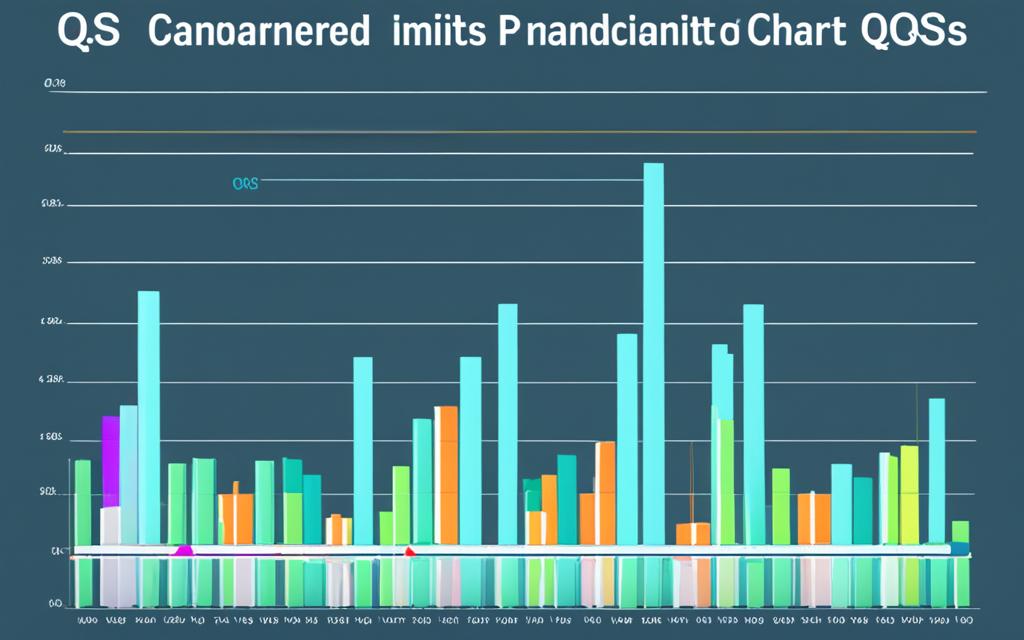Network bandwidth is a crucial factor in optimizing the performance of Personal Area Networks (PANs) and ensuring seamless connectivity. To achieve optimal bandwidth consumption and enhance user experience, network administrators need to proactively manage and optimize bandwidth usage.
Outdated hardware, improper cabling strategies, software bugs, malware, and oversized applications are common culprits that can impede bandwidth efficiency. By addressing these factors, network administrators can optimize PAN performance and provide uninterrupted connectivity.
In this article, we will explore effective bandwidth management strategies for PANs, focusing on how to optimize Personal Area Network performance and achieve seamless connectivity. We will discuss factors that hinder bandwidth efficiency, tips to optimize network bandwidth, the importance of establishing the right Quality of Service (QoS) policies, implementing VLANs for efficient bandwidth usage, user education for optimized bandwidth consumption, and the benefits of network monitoring in bandwidth optimization.
Through proactive bandwidth management and effective strategies, PANs can operate at peak efficiency, providing a seamless and enhanced user experience. Stay tuned for the upcoming sections where we delve into each topic to help you optimize your PAN performance and ensure seamless connectivity.
Factors that Hamper Efficient Use of Network Bandwidth
Efficient utilization of network bandwidth is crucial for optimal network performance. However, several factors can impede the efficiency of bandwidth consumption, leading to slower data transmission speeds and network congestion.
One of the primary factors that hinder bandwidth efficiency is the use of outdated routers, switches, and Ethernet cabling. These outdated components have limited data transmission capabilities, resulting in bottlenecks and slower network speeds.
Improper cabling strategies also contribute to inefficient bandwidth usage. Using low-quality cables or excessively long cable lengths can degrade signal quality, leading to data loss and reduced bandwidth efficiency.
Software bugs and malware infections pose additional challenges to bandwidth optimization. Network congestion can occur when these issues cause traffic flows to slow down, affecting overall network performance.
“Effective bandwidth consumption management is crucial for ensuring seamless connectivity and maximizing network efficiency.”
Oversized applications are another significant factor that strains bandwidth usage. These applications consume excessive storage, backup, and network resources, further reducing available bandwidth for other essential tasks.
Inadequate allocation of bandwidth for different applications and a weak network design can also contribute to inefficient bandwidth consumption. Without proper allocation and a well-designed network infrastructure, critical applications may not receive the necessary bandwidth, leading to productivity and performance issues.
By addressing these factors and implementing effective bandwidth management strategies, organizations can optimize network performance and ensure efficient utilization of network bandwidth.
Tips to Optimize Network Bandwidth
To improve network performance and optimize bandwidth usage, network teams can implement various strategies. By following these tips, businesses can ensure smooth connectivity and enhance overall user experience.
Collect and Analyze Network Data:
Start by collecting network data and establishing baselines. This data will help you identify peak periods and understand the patterns of bandwidth consumption. By analyzing this information, you can make informed decisions to optimize your network resources.
Map Network Topology:
Mapping out your network topology is crucial for identifying potential bottlenecks and optimizing network design. By visualizing your network infrastructure, you can identify areas of congestion and make necessary adjustments to improve bandwidth usage.
Streamline Communication with VLANs and Subnets:
Assessing Virtual Local Area Networks (VLANs) and subnets can streamline communication and minimize unnecessary traffic. By properly segmenting your network, you can allocate bandwidth efficiently and prevent congestion caused by excessive data transmission.
Implement Load Balancing and Caching:
Load balancing distributes network traffic evenly across multiple servers, optimizing bandwidth usage and improving overall performance. Implementing caching mechanisms can also help reduce bandwidth consumption by serving frequently accessed data locally.
Set up Policies and Prioritization:
By establishing policies and prioritizing essential applications, you can ensure that critical resources receive the necessary bandwidth. This helps in optimizing network performance and meeting the requirements of important tasks.
Time Network Upgrades Appropriately:
Timing network upgrades strategically can minimize disruptions and ensure smooth operation. By planning upgrades during periods of low network activity, you can optimize bandwidth usage and minimize user impact.
Implement Monitoring Tools:
By using network monitoring tools, you can proactively manage and optimize network bandwidth. These tools provide real-time insights into network performance, allowing you to identify and address issues promptly.
Plan for Future Changes and Advancements:
Anticipating future changes and advancements is crucial for long-term performance optimization. By considering emerging technologies and bandwidth requirements, you can ensure that your network is future-proofed and ready to handle increasing demands.
Implementing these tips will enable businesses to optimize bandwidth usage, improve network performance, and ensure seamless connectivity. By proactively managing network resources and making informed decisions, organizations can enhance user experience and boost productivity.
Establishing Right QoS Policies for Bandwidth Management
Quality of Service (QoS) policies are essential for optimizing network performance and ensuring efficient bandwidth management. By prioritizing applications and allocating sufficient bandwidth to business-critical functions, network administrators can maximize network efficiency and user experience. The right QoS policies involve categorizing applications based on their sensitivity to delay and latency, allowing the allocation of appropriate bandwidth resources.
Effective creation and implementation of QoS policies require constant monitoring and adjustments to maintain optimal network performance. Administrators must continuously evaluate the effectiveness of these policies and make necessary changes to ensure that critical resources receive the prioritized bandwidth.
QoS policies can be implemented using tools like ManageEngine NetFlow Analyzer to measure traffic pattern variations and evaluate their impact on network performance. This powerful tool provides network administrators with real-time insights into network traffic, enabling them to make informed decisions regarding bandwidth allocation.
By establishing the right QoS policies, network administrators can achieve bandwidth prioritization that aligns with the organization’s requirements and enhances network performance optimization.
| Benefits of Establishing Right QoS Policies | Implementing Tools like ManageEngine NetFlow Analyzer |
|---|---|
|
 |
Implementing the right QoS policies facilitates effective bandwidth prioritization, leading to network performance optimization and smooth operation of critical applications.
Implementing VLANs for Efficient Bandwidth Usage
Virtual Local Area Networks (VLANs) are a powerful tool for optimizing network performance and improving bandwidth usage. By segmenting the network into smaller groups, VLANs effectively reduce broadcast traffic and minimize unnecessary data transmission, leading to reduced network congestion and enhanced overall efficiency.
VLANs provide an added layer of security by isolating compromised areas of the network. This isolation prevents the spread of malware or breaches, ensuring enhanced security for critical network resources. By implementing VLANs, network administrators can efficiently allocate and manage resources, ensuring that priority and bandwidth are appropriately assigned to critical areas of the network.
The Benefits of VLANs for Bandwidth Optimization:
- Reduced broadcast traffic: VLANs significantly reduce broadcast traffic by limiting data transmission to only the devices within a particular VLAN. This reduction in unnecessary traffic helps free up bandwidth, improving network performance.
- Enhanced security: VLANs provide isolation between different segments of the network, preventing unauthorized access and minimizing the potential impact of security breaches. This isolation helps protect critical resources and strengthens the overall network security posture.
- Efficient resource allocation: By implementing VLANs, network administrators can allocate resources more effectively based on specific needs and priorities. Critical areas of the network can be assigned higher priority and allocated more bandwidth, ensuring optimal performance.
Implementing VLANs is an essential step towards optimizing bandwidth usage and enhancing network performance. With reduced broadcast traffic, enhanced security, and efficient resource allocation, VLANs provide a solid foundation for a high-performing network infrastructure. By leveraging the benefits of VLANs, network administrators can elevate their network efficiency and deliver a seamless user experience.
“VLANs play a crucial role in reducing network congestion, improving security, and optimizing bandwidth usage. By segmenting the network and providing isolation, VLANs create a more efficient and secure environment for critical network resources.” – Network Expert
Implementing VLANs is a strategic choice for organizations that prioritize efficient bandwidth usage, reduced network congestion, and enhanced security. By leveraging the power of VLANs, businesses can optimize their network performance, improve user experience, and ensure the smooth operation of critical applications and services.
User Education for Optimized Bandwidth Consumption
Educating users about their behavior and its impact on network bandwidth is crucial to optimize network performance and improve productivity. By increasing awareness of activities that consume excessive bandwidth, such as streaming videos or sharing large files via email, employees can actively contribute to bandwidth optimization efforts. Encouraging alternative methods of file sharing, such as utilizing cloud services, can help reduce bandwidth strain and promote efficient resource utilization.
Moreover, educating employees about the best times to execute certain processes can help avoid network congestion during peak usage periods. By timing tasks strategically, users can prevent unnecessary strain on bandwidth and ensure smooth network operations. For example, scheduling large file transfers during off-peak hours can minimize interruption to other critical network activities.
Implementing user education initiatives empowers employees to make informed choices that align with network bandwidth optimization goals while improving overall productivity. By promoting responsible usage and optimal utilization of network resources, organizations can enhance user cooperation, reduce bandwidth wastage, and maintain optimal network performance.
The Benefits of User Education
“User education is pivotal in achieving maximum network bandwidth optimization and fostering a productive work environment.”
- Enhanced User Understanding: Educated users possess a better understanding of the impact of their actions on network bandwidth, resulting in more conscientious usage.
- Improved Network Efficiency: By reducing excessive bandwidth consumption, user education paves the way for improved network performance, minimized congestion, and smoother data transmission.
- Increased Productivity: When users are aware of the best practices for bandwidth consumption, they can streamline their activities to minimize disruptions and optimize productivity.
- Reduced IT Support Overhead: Educated users are more likely to adopt responsible bandwidth usage practices, reducing the need for extensive IT support and troubleshooting.
User education is a crucial element in network bandwidth optimization strategies. By fostering a culture of responsible usage and empowering employees with the knowledge to make informed decisions, organizations can achieve improved network performance, enhanced productivity, and a smoother user experience.
Benefits of Network Monitoring for Bandwidth Optimization
Network monitoring is a crucial practice for optimizing bandwidth usage and maintaining network performance. By continuously monitoring network traffic, administrators can identify bottlenecks, diagnose issues, and take proactive measures to address them. This process involves the collection and analysis of real-time and historical data, enabling administrators to make informed decisions regarding capacity planning, upgrades, and configuration changes.
One of the key benefits of network monitoring is the ability to detect abnormal traffic patterns, excessive bandwidth usage, and potential security threats. By identifying these issues early on, administrators can prevent network congestion, ensure efficient bandwidth allocation, and enhance overall network performance.
Additionally, network monitoring plays a vital role in bottleneck identification. Through the analysis of network data, administrators can pinpoint areas of the network that are experiencing high traffic or performance issues. This insight enables them to prioritize network resources, optimize data flow, and effectively allocate bandwidth to ensure smooth operations.
Furthermore, network monitoring provides valuable insights to help guide capacity planning. By analyzing network traffic trends and identifying peak periods, administrators can accurately assess bandwidth requirements and plan for future needs. This helps prevent network slowdowns and ensures that the network can accommodate increasing demands without sacrificing performance.
Implementing effective network monitoring tools, such as ManageEngine NetFlow Analyzer, allows for comprehensive traffic analysis and performance optimization. These tools provide administrators with detailed reports, visualizations, and alerts, facilitating the efficient management of network bandwidth and enabling prompt action to resolve any deviations from optimal bandwidth consumption.
Benefits of Network Monitoring for Bandwidth Optimization:
- Identification of bottlenecks in the network
- Prevention of network congestion and slowdowns
- Efficient allocation of network resources
- Detection of abnormal traffic patterns
- Identification of excessive bandwidth usage
- Enhanced network security by identifying potential threats
- Accurate capacity planning and future-proofing
Network monitoring is a necessary practice for optimizing bandwidth usage, improving network performance, and ensuring a seamless user experience. By proactively monitoring network traffic, administrators can identify and resolve issues, make informed decisions, and maintain an efficient and reliable network infrastructure.
Conclusion
Effective PAN bandwidth management is essential for optimizing network performance and ensuring seamless connectivity. By addressing factors that impede efficient bandwidth usage and implementing optimization strategies, network administrators can significantly improve the overall performance of Personal Area Networks (PANs).
By prioritizing critical applications through Quality of Service (QoS) policies, network administrators can allocate sufficient bandwidth to ensure optimal performance. Ongoing network monitoring and regular reconfiguration allow for timely identification of bottlenecks and proactive resolution of issues, ensuring that optimal bandwidth consumption is maintained.
User education plays a crucial role in optimizing bandwidth consumption. Educating users about the impact of their behavior on network performance can help reduce excessive bandwidth usage and improve overall productivity. By promoting responsible usage and alternative methods of file sharing, network administrators can enhance network performance and provide a seamless user experience.
Overall, with proper bandwidth management, PANs can operate at peak efficiency, providing uninterrupted connectivity and seamless user experience. By utilizing optimization strategies, monitoring network performance, and educating users, network administrators can achieve network performance optimization and seamless connectivity for Personal Area Networks.
FAQ
What contributes to inefficient network bandwidth consumption?
Factors that can contribute to inefficient network bandwidth consumption include outdated hardware, improper cabling strategies, software bugs, malware, and oversized applications that consume excessive storage, backup, and network resources.
How can network teams optimize bandwidth usage and improve network performance?
Network teams can optimize bandwidth usage and improve network performance by collecting network data, establishing baselines, mapping out network topology, assessing VLANs and subnets, load balancing, caching, setting up policies and prioritization, timing network upgrades, implementing monitoring tools, and planning for future changes and advancements.
What role do Quality of Service (QoS) policies play in bandwidth management?
Quality of Service (QoS) policies play a crucial role in bandwidth management by prioritizing applications and allocating sufficient bandwidth to business-critical functions. Categorizing applications based on their sensitivity to delay and latency helps establish the right QoS policies.
How do Virtual Local Area Networks (VLANs) improve bandwidth usage and network performance?
Virtual Local Area Networks (VLANs) improve bandwidth usage and network performance by segmenting the network into smaller groups, reducing broadcast traffic, minimizing unnecessary data transmission, reducing network congestion, and enhancing overall efficiency. VLANs also provide added security by isolating compromised areas of the network.
How can educating users about their behavior impact network bandwidth optimization?
Educating users about their behavior can significantly contribute to network bandwidth optimization by making them aware of activities that consume excessive bandwidth, promoting alternative methods of file sharing, and educating them about the best times to execute certain processes to avoid network congestion during peak usage periods.
What role does network monitoring play in optimizing bandwidth usage?
Network monitoring plays a vital role in optimizing bandwidth usage by continuously monitoring network traffic, identifying bottlenecks, diagnosing issues, and taking proactive measures to address them. It helps detect abnormal traffic patterns, excessive bandwidth usage, potential security threats, and allows for informed decisions regarding capacity planning, upgrades, and configuration changes.



















